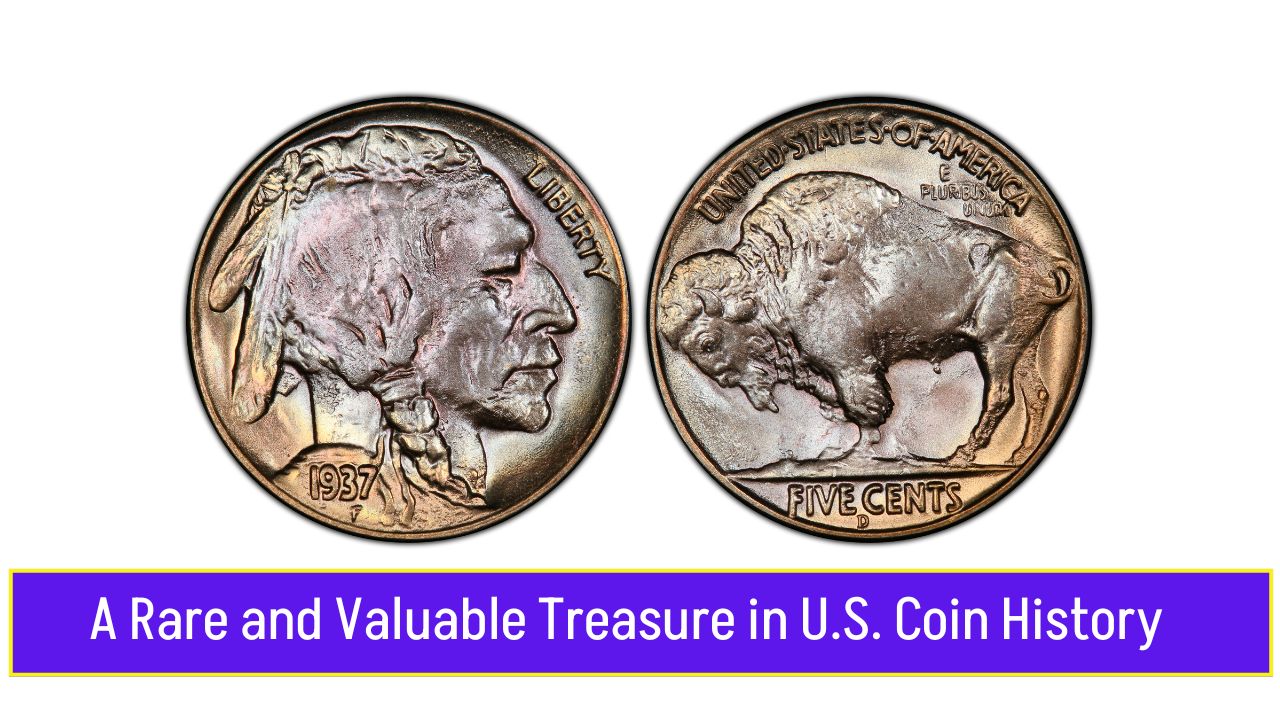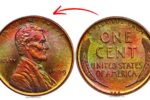The 1937-D Buffalo Nickel is one of the most fascinating and valuable coins in American numismatic history. Minted at the Denver Mint, this coin is part of the widely recognized Buffalo Nickel series, which was produced from 1913 to 1938. While the 1937-D Buffalo Nickel is already considered a collectible piece, certain rare varieties make it even more sought after by coin collectors and investors.
The History of the Buffalo Nickel
The Buffalo Nickel, also known as the Indian Head Nickel, was introduced in 1913 as a replacement for the Liberty Head Nickel. Designed by James Earle Fraser, the coin was created to honor the Native American heritage and the American bison, two significant symbols of the United States.
- Obverse (Front): Features the profile of a Native American, which is believed to be a composite of several real-life Indigenous leaders.
- Reverse (Back): Showcases an American bison (buffalo), reportedly modeled after a bison named Black Diamond from the New York Central Park Zoo.
The Buffalo Nickel series remained in circulation until 1938, when it was replaced by the Jefferson Nickel.
What Makes the 1937-D Buffalo Nickel Special?
The 1937-D Buffalo Nickel, minted in Denver, is a valuable and sought-after coin due to its low mintage and historical significance. While most 1937-D nickels are valuable, one variety—the 1937-D “Three-Legged” Buffalo Nickel—is considered extremely rare and highly valuable.
The 1937-D “Three-Legged” Buffalo Nickel
One of the most famous and valuable minting errors in U.S. coinage is the 1937-D Three-Legged Buffalo Nickel. This error occurred when a mint worker over-polished a damaged coin die, accidentally removing one of the buffalo’s front legs. As a result, the buffalo on the reverse appears to have only three legs instead of four.
How to Identify the 1937-D Three-Legged Buffalo Nickel
To determine if you have a 1937-D Three-Legged Buffalo Nickel, look for the following features:
- Missing Front Leg – The buffalo appears to have only three legs instead of four.
- Weak Details on the Hoof Area – The missing leg area often has a “faded” or “smudged” look.
- Mint Mark ‘D’ – The letter ‘D’ below the denomination “FIVE CENTS” confirms it was minted in Denver.
- Ground Line Below the Buffalo’s Belly – This feature remains intact despite the leg error.
Value of the 1937-D Buffalo Nickel
The value of the 1937-D Buffalo Nickel depends on several factors, including condition, rarity, and whether it is the Three-Legged variety.
Estimated Value Range
- Regular 1937-D Buffalo Nickel:
- Good Condition: $5 – $15
- Fine Condition: $20 – $50
- Mint State (Uncirculated): $100 – $250+
- 1937-D Three-Legged Buffalo Nickel:
- Good Condition: $500 – $1,000
- Fine Condition: $2,000 – $5,000
- Mint State (Uncirculated): $10,000 – $100,000+
Some of the highest-graded specimens of the 1937-D Three-Legged Buffalo Nickel have sold for over $100,000 at auctions.
Why Is the 1937-D Buffalo Nickel So Popular Among Collectors?
- Historical Significance – Part of the beloved Buffalo Nickel series.
- Unique Design – Features one of the most detailed and artistic designs in U.S. coinage.
- Rare Minting Error – The Three-Legged Buffalo variety is one of the most famous errors in numismatic history.
- High Value & Investment Potential – Continues to increase in value over time.
Conclusion
The 1937-D Buffalo Nickel is a treasured piece of American coin history, especially the rare Three-Legged variety. Whether you are a seasoned coin collector or a beginner, this nickel is an exciting find that holds significant value. If you ever come across a 1937-D Buffalo Nickel, especially with a missing leg on the buffalo, be sure to have it authenticated and appraised—you might be holding a fortune in your hands!
Would you like to know how to properly store and preserve rare coins like this? Let me know.




